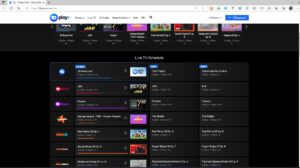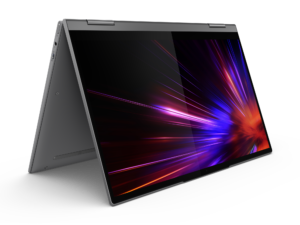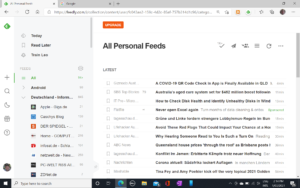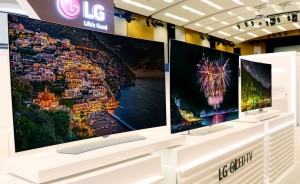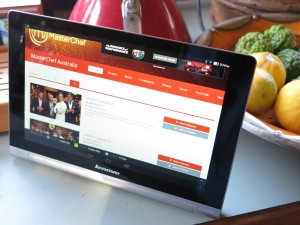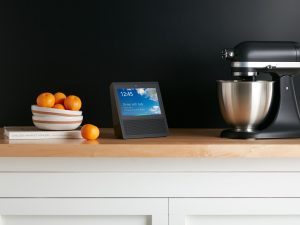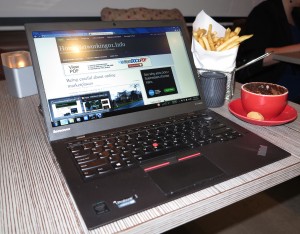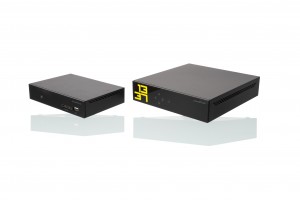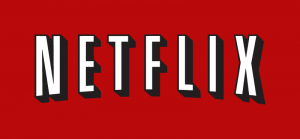How to redefine media sources now we are online
I often hear remarks about people, especially youth and young adults, not using traditional media like newspapers or broadcast media for their news. Rather they are using social media or other online sources as news sources and reading their news from a smartphone or tablet.
This has been driven by the “cord-cutting” issue within the USA especially where younger people are cancelling pay-TV subscriptions and relying primarily on online media. In some cases, this underscores the idea of moving away from established media outlets towards what there is on the Internet.
But the way we view media is changing now that we are in the online age.
Media publisher types seem to be divided between two major classes.
One class is the established media outlet who has been a publisher or a broadcaster for a long time. They have been associated with long setup costs and requirements such as printing presses and distribution infrastructure including newsstands; or broadcast licences and RF infrastructure (transmitters, satellite systems or cable-TV setups). Examples of these are the major newspapers or the public-service or commercial broadcasters.
The other class are the online-first publishers like bloggers, podcasters or YouTubers who publish their content primarily on one or more online platforms. They typically set themselves up on the online platforms typically by creating an account; or in some cases, they rent hosting space at a Web hosting provider and buy “online real estate” in the form of one or more domain names to create a Website.
An increasing role of online services that aggregate content
Then there the online platforms like social media, news aggregators, podcast directories, Internet-radio directories and video servers that simply serve a purpose of aggregating content produced by other online publishers.
This can also include portals like MSN.com, Google or Yahoo hat show news at a glance on a home page along with search directories like Google or Bing. We are also expecting to see more of these services come about as the Internet becomes the backbone of media distribution.
Publishers have seen these services as being of questionable value due to them not being able to monetise their work especially if their work is reproduced verbatim by the aggregator. This has caused continual spats between the established publishers and Big Tech who have been seeing themselves as publishers rather than aggregators.
What is the reality
Established media appearing online
But established media outlets have also set up multiple online front-ends whether free or paid. These also include at least a news portal ran by the publisher or broadcaster. But they also include RSS Webfeeds, podcasts or videos that appear in podcast and video directories, and content that is posted to the Social Web by the publisher.
Examples include TV broadcasters setting up “broadcast video on demand” platforms where they have their broadcast content available for viewing at any time; established news outlets offering their video reports on YouTube or some radio stations running online news portals. Or there are the Internet radio services that work with apps, Internet radios or smart speakers to bring traditional broadcast radio from anywhere in the world to you without the need of local RF-level presence.
Add to this attempts by TV and radio technology guardians to blur the distinction between consuming broadcast media via RF and Internet means and assure a familiar user experience when listening to or watching broadcast content. There is also pressure from established broadcasters to improve the discovery of their content that is offered linearly or on-demand through newer Internet-based devices.
Media outlets catering to the younger audience
A significant trend for established media publishers is to establish “youth-focused” media brands intended to appeal to teenagers and young adults. These nowadays appear exclusively or primarily on online platforms and the content is created and edited by young adults. As well, the content-presentation style is designed to appeal to youth and young adults, typically with snappy audio and video presentation, youthfully-fresh writing styles or simply on-trend with the young audience.
It is in addition to new “young-audience-first” media outlets appearing with content pitched to the young audience. Previously this would have been one of these media outlets running a magazine or radio station, where the content was primarily about fashion or pop-culture trends. But nowadays this manifests in the form of a podcast or online masthead accessible on the Internet and covers all issues of interest to young people including lifestyle issues.
This is something that some of the established media have been working on prior to the Internet, typically through running magazines, radio stations or broadcast shows that appealed to younger people. Here, these shows were seen as being complementary to the rest of that media outlet’s output so limiting the content of that brand to topics like the latest pop culture news.
Here, youth-focused media was seen as a way for business to court a valuable market that was represented by young people, using these platforms to pitch products and services relevant to that age group. Or, for broadcasters that didn’t rely on advertising, it was a way to see themselves as being relevant and attractive to younger audiences.
A history of adapting to new realities
These are steps being taken by established media outlets in order to keep themselves with the online generation, especially the younger generations. It is similar in prior times to how newspaper publishers had to cope with the new radio broadcasters when radio became popular, and how radio broadcasters had to cope when TV became popular and newer pure-play TV broadcasters appeared on the TV dial.
The main example is to have a Web-driven online newspaper that is offered for free, through donations or through subscriptions dependent on the publisher’s business model. Other approaches also include audio-on-demand (podcast) or video-on-demand material, or having the broadcast stream offered by Internet means.
The media outlets often see this as a way not just to stay relevant but to try different offerings or reach different markets in a low-risk manner. For example, The Guardian and the Daily Mail, two British newspapers, are reaching in to other Anglophone territories by offering an online version of their mastheads that can be read there. Or Communications Fiji Limited who run a handful of radio stations in Fiji and Papua New Guinea are running a Fiji-relevant online newspaper masthead known as Fiji Village.
There has always been criticism about new media types appearing. This tended to occur when there was an increased saturation of that media type amongst the population and the media type offered content that was popular. In a lot of cases, this criticism was directed at newer media platforms that were primarily about content that panders to our base instincts.
Online access to press releases
Most organisations including governments are publishing resources “from the horse’s mouth” online under their brand. These resources typically appear as press releases, blog posts or similar content including audiovisual content. Here, you can find them on the organisation’s Website or on online-service accounts operated by the organisation.
They can come in to play for verifying the authenticity of news material and even be useful for working against exaggeration by media outlets. Sometimes the blog posts can be used to “flesh out” what is being talked about in the press releases.
The issues to think of
A key issue is encouraging people to aware of the quality of news and information they consume from media in general.
Here, the blame about poor-quality news and information tends to be laid at the feet of online media. But these problems appear both with traditional media and the new online media.
For example, tabloid journalism, especially of a partisan nature, has been seen as a long-term media issue. It affects offline media, in the form of “red-top” tabloid newspapers, talkback radio hosted by “shock jocks”, tabloid-style public-affairs shows on Australian commercial TV, and far-right cable-TV news channels; as well as online media especially partisan online media outlets. Here, the issues raised include chequebook journalism, portraying marginalised communities in a negative light, and pandering to personal biases through emotion-driven copywriting.
In the online context, it is often referred to as “click-bait” because end-users are encouraged to click on the material to see further information about the topic. This often leads to seeing many ads for questionable online businesses.
This issue has become more intense since 2016 when it was realised that fake news and disinformation spread through social media was used to steer the outcome of the Brexit referendum and the US presidential election held that year.
What can be done
Media literacy
A key requirement is to encourage media literacy through education. An increasing number of schools are integrating media-literacy in to secondary-school curriculums, usually under various subjects.
As well, some libraries and community-education facilities are teaching media literacy to adults as short courses. You may find that some secondary schools may run a media-literacy short course as part of their community-education effort.
In addition, respected media outlets including public service broadcasters are supplying material about media literacy. Google is also joining in on the media-literacy game by running YouTube videos on that topic. This is thanks to YouTube being where videos with questionable information are being published.
Examples of this include the ABC’s “Media Watch” TV show that critiques media and marketing or their “Behind The News” media-literacy video series that was ran during 2020 as COVID started to take hold.
Here, media literacy is about being able to “read between the lines” and assess the veracity of news content. This includes being able to assess news sources carefully and critically as well as assess how news outlets are treating particular topics.
Flagging, debunking and prebunking misinformation and disinformation
Another effort that is taking place is the flagging, debunking and “prebunking” of misinformation and disinformation.
Fact-check websites ran by established media outlets and universities draw our attention to questionable information and highlight whether it is accurate or not. As well, they write up information to substantiate their findings regarding the questionable information and this is derived from collections of established knowledge o the topic.
Here, one could check through one or more of these Websites to see whether the information is accurate or not and why it is or isn’t accurate.
As well, mainstream online service providers are joining in the game by flagging potential disinformation and providing links to accurate resources on the topic. This was an effort that was very strong through the COVID pandemic due to the misinformation and disinformation that is swirling around cyberspace during the height of the pandemic. Such disinformation was at risk of causing people to make the wrong health choices regarding limiting the spread of COVID like not masking up or avoiding COVID vaccinations.
Then there are “prebunking” efforts typically undertaken by government departments or civil society to warn us about potential disinformation and propaganda. This is to make the public aware of the questionable information in a preemptive manner and publish accurate information on the topic at hand.
A common analogy that is used is how vaccinations work to defend our bodies against particular diseases or reduce the harm they can cause. I also use the common reference to the “guardrail at the top of the cliff” versus the “ambulance at the bottom of the cliff” where the guardrail protects against incidents occurring.
It can be in the form of online resources like FAQs carrying accurate information on the topic at and, typically to rebut the common myths. This can be augmented with other efforts like public-service announcements in traditional media or experts making appearances in the public space or on broadcasts to talk about these issues.
Conclusion
New approaches to distributing and consuming news will require us across the generations to adapt our thoughts regarding the different media outlets that exist. This will be more about the quality of the journalism that these outlets provide rather than how the news is distributed.
This will including identifying sources of good-quality journalism and, where applicable, supporting these sources in whatever way possible. As well, keeping ourselves media literate will also be an important task.

